Disaster education, communication and engagement Dufty
Visit to download the full and correct content document: https://ebookmass.com/product/disaster-education-communication-and-engagementdufty/
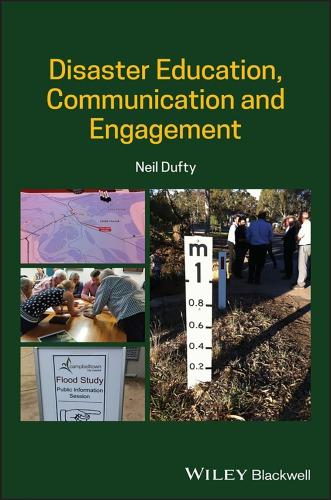
More products digital (pdf, epub, mobi) instant download maybe you interests ...
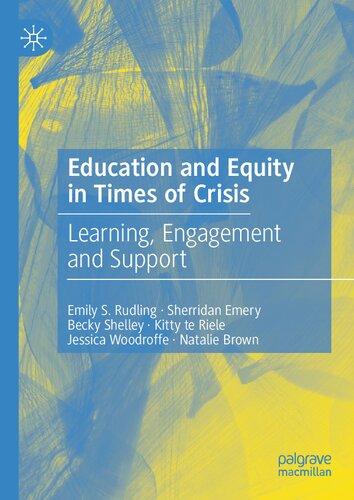
Education and Equity in Times of Crisis: Learning, Engagement and Support Emily S. Rudling
https://ebookmass.com/product/education-and-equity-in-times-ofcrisis-learning-engagement-and-support-emily-s-rudling/
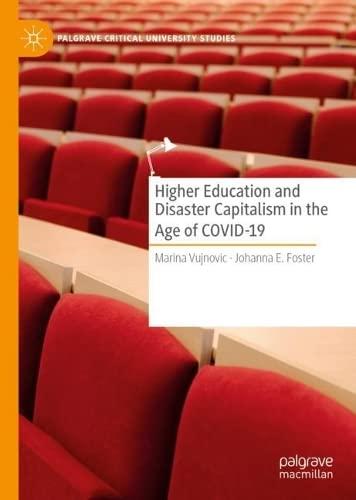
Higher Education and Disaster Capitalism in the Age of COVID-19 Marina Vujnovic
https://ebookmass.com/product/higher-education-and-disastercapitalism-in-the-age-of-covid-19-marina-vujnovic/
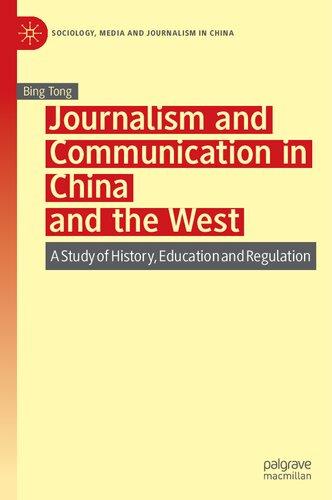
Journalism and Communication in China and the West: A Study of History, Education and Regulation Bing Tong
https://ebookmass.com/product/journalism-and-communication-inchina-and-the-west-a-study-of-history-education-and-regulationbing-tong/
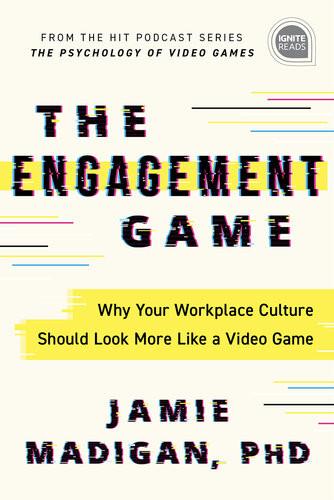
The Engagement Game Jamie Madigan
https://ebookmass.com/product/the-engagement-game-jamie-madigan/
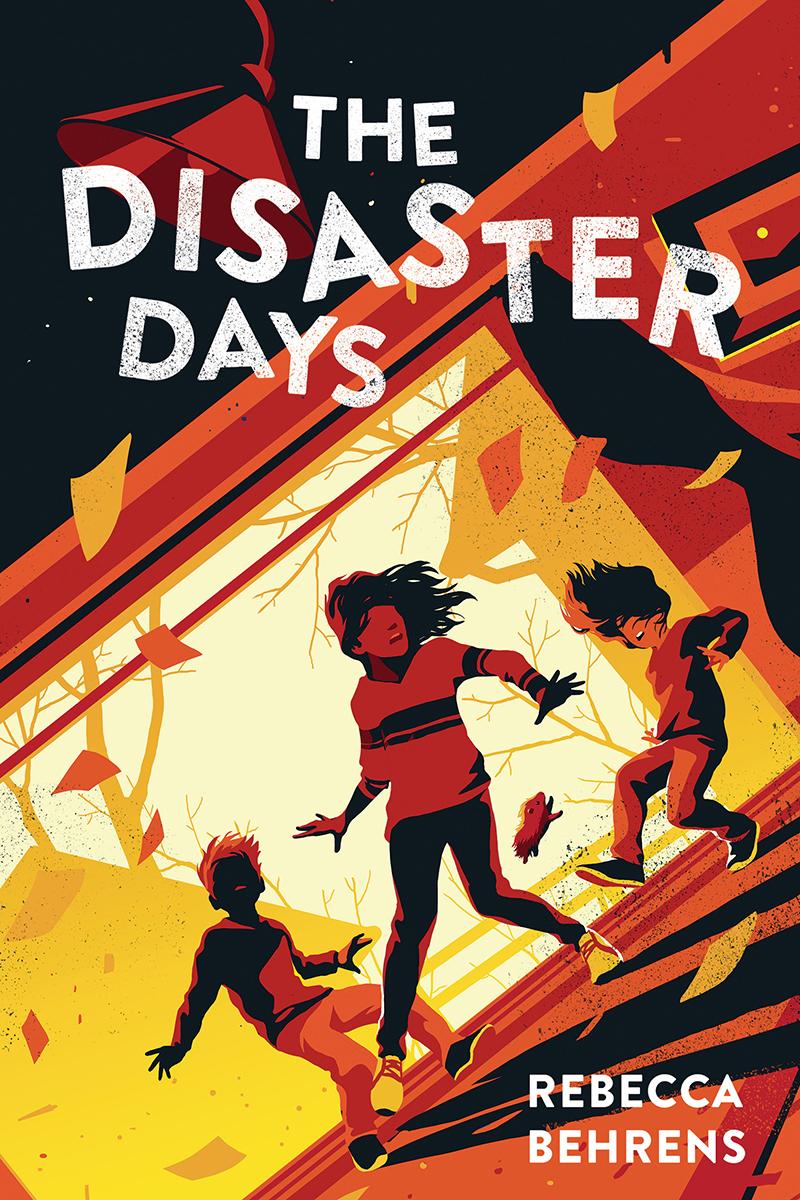
The Disaster Days Rebecca Behrens
https://ebookmass.com/product/the-disaster-days-rebeccabehrens-2/
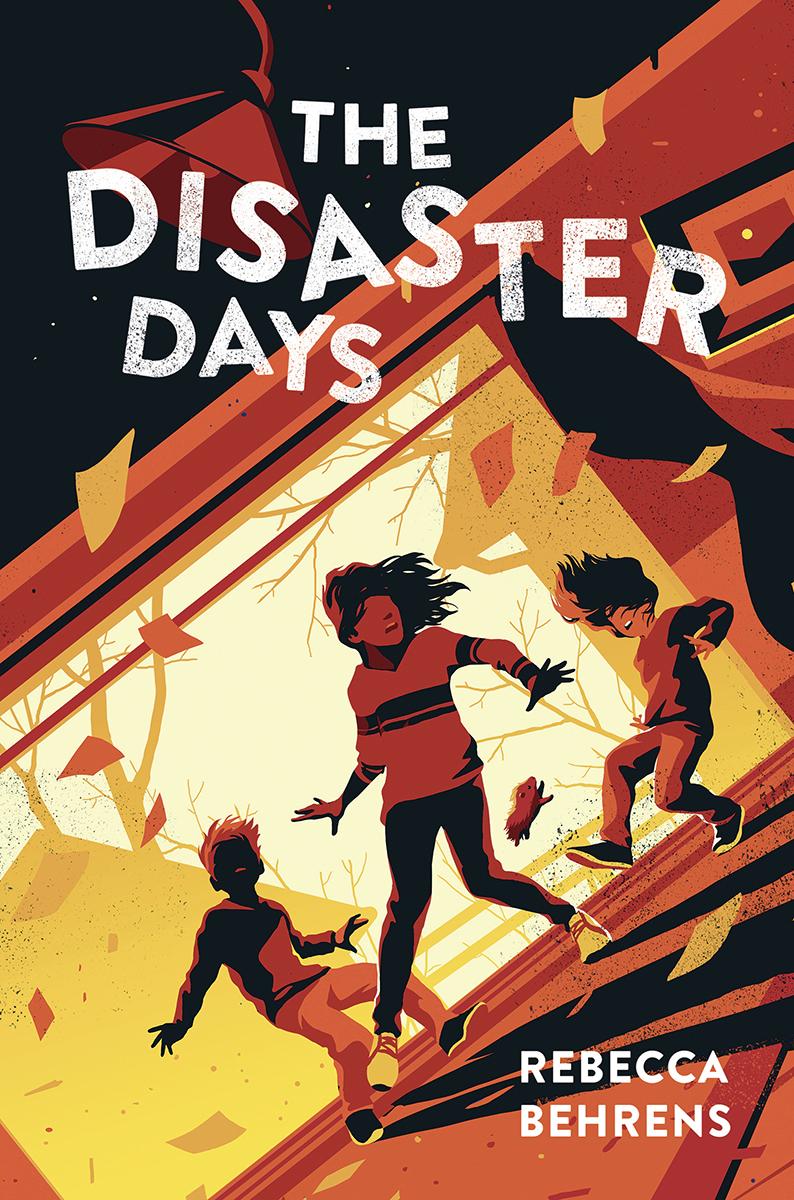
The Disaster Days Rebecca Behrens
https://ebookmass.com/product/the-disaster-days-rebecca-behrens/
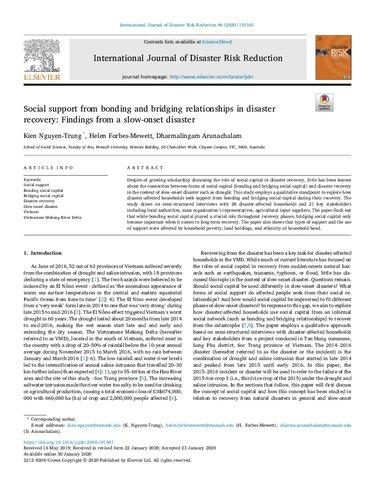
Social support from bonding and bridging relationships in disaster recovery: Findings from a slow-onset disaster Kien Nguyen-Trung
https://ebookmass.com/product/social-support-from-bonding-andbridging-relationships-in-disaster-recovery-findings-from-a-slowonset-disaster-kien-nguyen-trung/
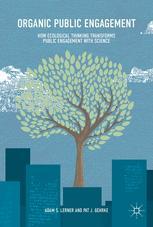
Organic Public Engagement: How Ecological Thinking Transforms Public Engagement with Science 1st Edition Adam S. Lerner
https://ebookmass.com/product/organic-public-engagement-howecological-thinking-transforms-public-engagement-withscience-1st-edition-adam-s-lerner/
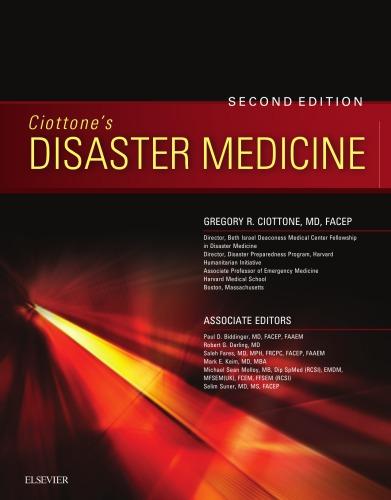
Ciottone’s Disaster Medicine Gregory R. Ciottone
https://ebookmass.com/product/ciottones-disaster-medicinegregory-r-ciottone/
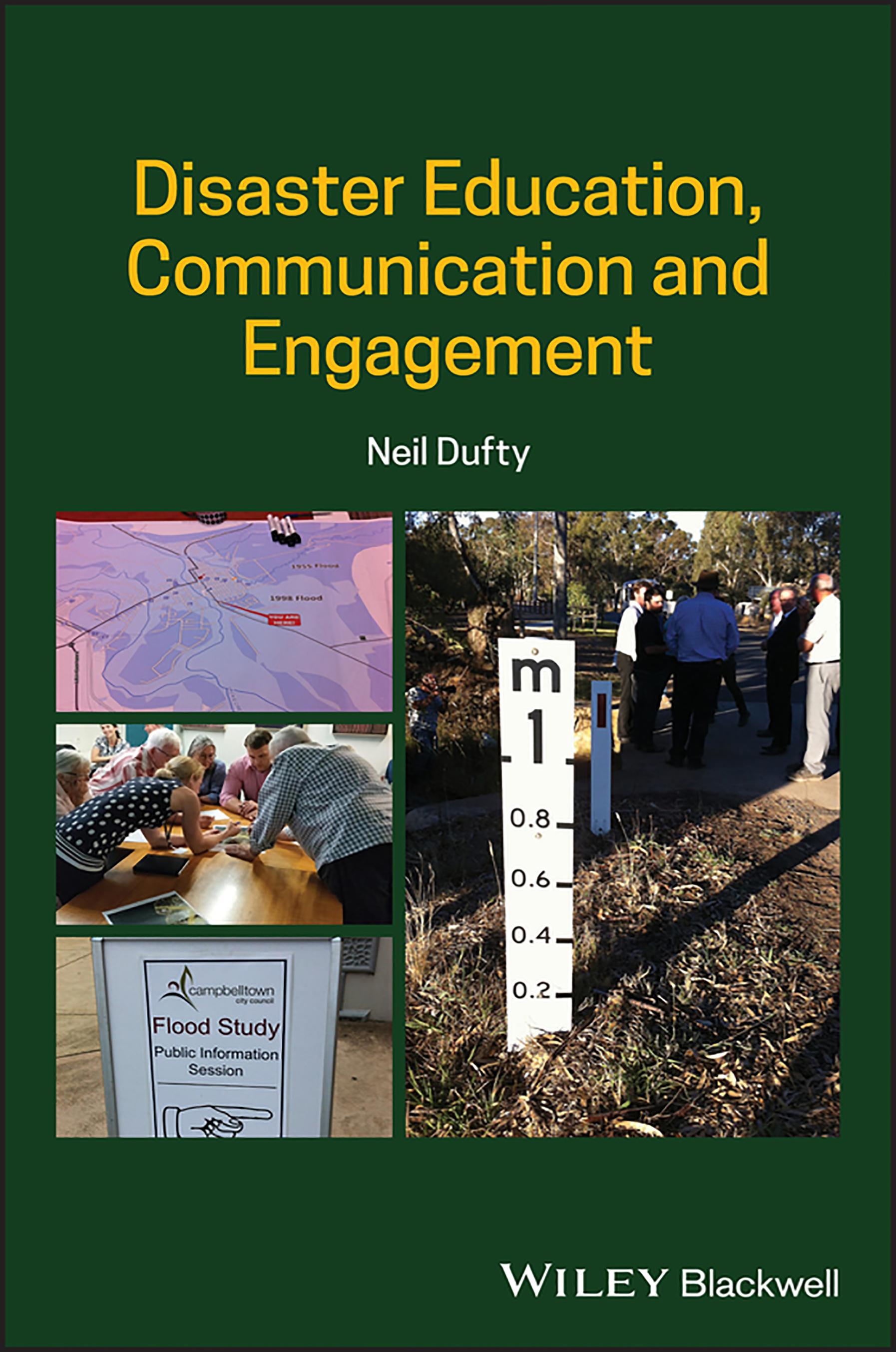
Disaster Education, Communication and Engagement
Disaster Education, Communication and Engagement
Neil Dufty
Molino Stewart Pty Ltd
Parramatta, NSW, Australia 2150
This edition first published 2020 © 2020 John Wiley & Sons Ltd
All rights reserved. No part of this publication may be reproduced, stored in a retrieval system, or transmitted, in any form or by any means, electronic, mechanical, photocopying, recording or otherwise, except as permitted by law. Advice on how to obtain permission to reuse material from this title is available at http://www.wiley.com/go/permissions.
The right of Neil Dufty to be identified as the author of this work has been asserted in accordance with law.
Registered Offices
John Wiley & Sons, Inc., 111 River Street, Hoboken, NJ 07030, USA
John Wiley & Sons Ltd, The Atrium, Southern Gate, Chichester, West Sussex, PO19 8SQ, UK
Editorial Office
9600 Garsington Road, Oxford, OX4 2DQ, UK
For details of our global editorial offices, customer services, and more information about Wiley products visit us at www.wiley.com.
Wiley also publishes its books in a variety of electronic formats and by print‐on‐demand. Some content that appears in standard print versions of this book may not be available in other formats.
Limit of Liability/Disclaimer of Warranty
While the publisher and authors have used their best efforts in preparing this work, they make no representations or warranties with respect to the accuracy or completeness of the contents of this work and specifically disclaim all warranties, including without limitation any implied warranties of merchantability or fitness for a particular purpose. No warranty may be created or extended by sales representatives, written sales materials or promotional statements for this work. The fact that an organization, website, or product is referred to in this work as a citation and/or potential source of further information does not mean that the publisher and authors endorse the information or services the organization, website, or product may provide or recommendations it may make. This work is sold with the understanding that the publisher is not engaged in rendering professional services. The advice and strategies contained herein may not be suitable for your situation. You should consult with a specialist where appropriate. Further, readers should be aware that websites listed in this work may have changed or disappeared between when this work was written and when it is read. Neither the publisher nor authors shall be liable for any loss of profit or any other commercial damages, including but not limited to special, incidental, consequential, or other damages.
Library of Congress Cataloging‐in‐Publication data applied for ISBN: 9781119569794 [hardback]
Cover design: Wiley
Cover Images: Flood map Courtesy of NSW State Emergency Service, People having discussion Courtesy of Neil Dufty, Flood study sign Courtesy of Campbelltown City Council, Level scale meter Courtesy of Neil Dufty
Set in 9.5/12.5pt STIXTwoText by SPi Global, Chennai, India
Printed and bound by CPI Group (UK) Ltd, Croydon, CR0 4YY
9 8 7 6 5 4 3 2 1
Contents
Acknowledgements xi
Part I Context 1
1 Disasters and Learning 3
1.1 Hazard 3
1.2 Disaster 4
1.3 Disasters Are Socially Constructed 4
1.4 Disasters and Communities 5
1.5 Learning 6
References 6
2 Disaster ECE 9
2.1 Disaster Education 9
2.1.1 Defining Disaster Education 9
2.1.2 Modes of Disaster Education 10
2.1.3 Learning Relationships 11
2.2 Disaster Communication 13
2.2.1 Risk Communication 13
2.2.1.1 Risk 13
2.2.1.2 Risk Perception 14
2.2.1.3 Trust 16
2.2.1.4 Communicating Risk 16
2.2.2 Crisis Communication 17
2.2.2.1 Early Warning 17
2.2.2.2 Response 18
2.2.2.3 Recovery 19
2.2.2.4 Between Agencies 20
2.3 Engagement 20
2.3.1 Public Participation Spectrum 21
2.3.2 Crowdsourcing 22
2.3.3 Citizen Science 22
2.3.4 Community Participatory Disaster Risk Assessment 23
2.3.5 Volunteered Geographic Information 24
2.4 Disaster ECE 24 References 26
3 ECE Across the Disaster Management Cycle 33
3.1 ‘The Disaster Management Cycle’ 33
3.2 Mitigation 35
3.2.1 Disaster Risk Analysis 36
3.2.2 Risk Awareness 38
3.2.3 Mitigation Options 41
3.3 Preparedness 44
3.3.1 Preparedness Guides 45
3.3.2 Emergency Plans 46
3.3.3 Campaigns 49
3.3.4 Learning Methods 49
3.4 Early Warning 50
3.5 Response 52
3.5.1 News Media 54
3.5.2 Social Media 55
3.6 Recovery 56
3.7 Lessons Learned 57
3.8 Reconstruction 58 References 59
4 The Importance and Usefulness of Disaster ECE 69
4.1 Inputs 71
4.2 Activities 75
4.3 Outputs 75
4.4 Short-Term Impacts 78
4.5 Intermediate Impacts 79
4.6 Outcomes 81 References 81
5 Exploring Relevant Research Fields 85
5.1 Disaster Resilience 85
5.1.1 The Resilience Concept 85
5.1.2 Disaster ECE and Resilience 87
5.2 Disaster Psychology 88
5.2.1 Risk Awareness and Perception 88
5.2.2 Previous Experience and Local Knowledge 90
5.2.3 Preparedness 92
5.2.3.1 The Protection Motivation Theory (PMT) 93
5.2.3.2 Protective Action Decision Model (PADM) 94
5.2.3.3 Socio-Cognitive Preparedness Model 95
5.2.4 Response 96
5.2.5 Recovery 101
5.3 Disaster Sociology 103
5.3.1 Vulnerability 104
5.3.2 Social Capital 106
5.4 Learning Theory 108
5.4.1 Behavioural Learning 109
5.4.2 Cognitive Learning 109
5.4.3 Affective Learning 110
5.4.4 Social Learning 111 References 114
Part II Local Disaster ECE 125
6 Designing Effective Disaster ECE Plans and Programmes 127
6.1 Lifelong Learning 127
6.2 Localisation and Learner Needs 128
6.3 A Framework for Tailoring Disaster ECE 130
6.3.1 Principles of Effective Disaster Education 130
6.3.2 ‘Palettes’ of Potential Content and Methods 132
6.3.3 ‘Filters’ to Choose Appropriate Local Disaster ECE Content and Methods 133
References 134
7 Disaster ECE Principles 137
References 141
8 Disaster ECE Content 143
8.1 Across the Disaster Management Cycle 143
8.1.1 Mitigation 144
8.1.2 Preparedness 146
8.1.3 Early Warning 146
8.1.4 Response 147
8.1.5 Recovery 147
8.1.6 Lessons Learned 148
8.1.7 Reconstruction 148
8.2 Disaster Resilience 148
8.3 Climate Change 150
8.3.1 Climate Change and Disaster Risk Reduction 152
8.3.2 ‘Global Warming’ vs ‘Climate Change’ 153
8.3.3 Support for Climate Change 153
8.3.4 Implications for Disaster ECE 155
8.4 Sustainability 156
References 160
9 Disaster ECE Methods 165
9.1 A Typology of Disaster ECE Methods 165
9.2 Information 166
9.2.1 Maps 168
9.2.2 Frequently Asked Questions (FAQs) 169
9.2.3 Warning Sirens 170
9.2.4 Emergency Alert Messages 171
9.3 Interactions 173
9.3.1 Social Media 173
9.3.2 Apps 178
9.3.3 Games 179
9.3.4 Virtual Reality 182
9.3.5 Scenario Planning 183
9.3.6 People–People Interactions 184
9.4 Skills and Capabilities 187
9.4.1 Drills 188
9.4.2 Exercises 188
9.4.3 Oral, Visual, and Written Histories 190
9.4.4 Communities of Practice 190
9.4.5 Awards 192
9.4.6 Simulations 193
9.4.7 Staff Ride 194
9.4.8 Volunteering 194
9.5 Creative Expression 196
9.5.1 Art 197
9.5.2 Writing 197
9.5.3 Movies 199
9.5.4 Puppetry 200
9.5.5 Memorials 200
9.6 Integrating Methods 201 References 202
10 Understanding Communities and Their Risks 213
10.1 Understanding the Local Community 213
10.1.1 Population Surveys 214
10.1.2 Questionnaires 217
10.1.3 Social Network Analysis 217
10.1.4 Local Knowledge 219
10.2 Local Disaster Risks 220
10.3 Risk Reduction Measures 223
10.4 Emergency Management 224
10.5 Building Resilience 230 References 233
11 Learners 239
11.1 Youth 239
11.1.1 Vulnerability 240
11.1.2 Youth and DRR 241
11.1.3 Disaster ECE in Schools 243
11.1.4 Curriculum-Based Learning 244
11.1.5 Non-curricula Learning 250
11.2 Other Vulnerable People 252
11.2.1 Women and Girls 252
11.2.2 People with Disabilities 253
11.2.3 Older People 256
11.3 Businesses 259
11.3.1 Vulnerabilities 259
11.3.2 Mitigation 261
11.3.3 Preparedness 263
11.3.4 Recovery and Resilience 267
11.4 Animal Guardians 269
11.5 Tourists 273
11.6 Archetypes 275
References 276
12 Disaster ECE Programmes and Plans 289
12.1 Tailoring Disaster ECE 289
12.2 Disaster ECE Plans 291
12.3 Disaster ECE Programmes 294
Contents x
12.4 Evaluation 296
12.5 Participation 297
References 299
Index 301
Acknowledgements
I would like to thank the staff at Molino Stewart Pty Ltd for the opportunity to research disaster education, communication, and engagement over the past 16 years. I would particularly like to thank Managing Director Steven Molino who has supported my research over the years and provided sage advice, especially in floodplain risk management and emergency management.
I would like to also like to thank three members of the New South Wales State Emergency Service for motivating me to write this book:
1. Phil Campbell, who 12 years ago described the state of research into disaster education as a ‘black hole’.
2. Steve Opper, who challenged me to find the evidence that disaster education actually works to change emergency preparedness and response behaviours.
3. David Webber, who has given me several funded opportunities to research innovations in disaster education and engagement. He has also been a great sounding board for translating this research into practice in the emergency services.
A primary source of research for this book was from Australia. In particular, I would like to note the robust disaster research of the Bushfire and Natural Hazards Cooperative Research Centre from which I have drawn many examples. Also, I would like to acknowledge the learning from my network of disaster researchers and emergency managers from around the world. One of these international networks is The International Emergency Management Society (TIEMS) and another is the Centre for Water, Communities and Resilience at the University of the West of England (of which I am a member of the International Advisory Board). In Australia, I have learned much from involvement in Floodplain Management Australia (FMA), including from participating in its annual national conferences.
Finally, I would like to thank Sydney Trains for the environment to write this book to and from work.
Part I Context
Disasters and Learning
This book is about learning that aims to help keep people safe and minimise damage in disasters. Drawing on evidence from a range of sources, it provides guidance on how to tailor disaster‐related learning to local communities.
The book offers a bridge between academic theory and research, and disaster learning practice. It enables practitioners to prepare effective disaster learning plans, programmes, and activities.
Prior to commencing discussion, it is important to define some key terms used throughout the book.
1.1 Hazard
According to the United Nations Office for Disaster Risk Reduction (2017), a hazard is a ‘process, phenomenon or human activity that may cause loss of life, injury or other health impacts, property damage, social and economic disruption or environmental degradation’.
Hazards include biological (e.g. diseases, mosquitoes carrying disease‐causing agents), environmental (e.g. chemical, natural, and biological hazards), geological (e.g. earthquakes, volcanoes, landslides), hydrometeorological (e.g. tropical cyclones/ hurricanes/typhoons, floods, droughts, heatwaves, wildfires), and technological processes and phenomena (e.g. transport accidents, dam failures, factory explosions, and nuclear radiation). Some hazard typologies also include terrorist attacks and human conflict.
More broadly, hazards can be classified as ‘natural’ or ‘anthropogenic’. However, some ‘natural’ hazards can be augmented by human activities (Kelman 2018). For example, a levee built to mitigate flood hazard may exacerbate flood depths and velocities elsewhere. This book focuses mainly on natural hazards.
1.2 Disaster
There are numerous definitions of ‘disaster’ in the literature, although most involve the concept of a community impacted by a hazard (or multiple hazards) not being able to cope by itself and requiring external assistance to recover.
The United Nations Office for Disaster Risk Reduction (2017) defines a disaster as ‘a serious disruption of the functioning of a community or a society at any scale due to hazardous events interacting with conditions of exposure, vulnerability and capacity, leading to one or more of the following: human, material, economic and environmental losses and impacts’.
‘Emergencies’ differ from disasters in that they relate to ‘hazardous events that do not result in the serious disruption of the functioning of a community or society’ (United Nations Office for Disaster Risk Reduction 2017).
Countries and jurisdictions within countries around the world have different criteria for declaring disasters and these can be influenced by political considerations. An analysis of global disasters between 1998 and 2017 (Centre for Research on the Epidemiology of Disasters 2018) found the following:
● Climate‐related (hydrometeorological) and geophysical disasters killed 1.3 million people and left a further 4.4 billion injured, homeless, displaced, or in need of emergency assistance.
● While the majority of fatalities were due to geophysical events, mostly earthquakes and tsunamis, 91% of all disasters were caused by floods, storms, droughts, heatwaves, and other extreme weather events.
● In 1998–2017, disaster‐hit countries reported direct economic losses valued at US$2908 billion. This has increased from 68% (US$895 billion) of losses (US$1313 billion) reported between 1978 and 1997.
1.3 Disasters Are Socially Constructed
Disaster research shows that the idiom ‘it was a disaster waiting to happen’ rings true. For many years it has been accepted that disasters are caused by underlying societal issues such as vulnerabilities and inequalities, and not by an ‘Act of God’ hazard. As Tierney (2014) states, ‘the origins of disaster lie not in nature, and not in technology, but rather in the ordinary everyday workings of society itself’.
After the destructive 1755 Lisbon earthquakes, in a letter young French philosopher Jean‐Jacques Rousseau challenged the great French philosopher Voltaire’s view that the event was how God showed His power, glory, and might. Rousseau noted that nature did not construct thousands of buildings and houses of six to
seven storeys that collapsed in the earthquakes. Some academics claim that Rousseau’s letter to Voltaire symbolised the beginning of the shift in thinking leading to the socially‐constructed interpretation of disaster events.
In 1976, O’Keefe et al. used empirical global economic loss data to show that social‐economic and not natural factors should be seen as responsible for both the loss of many lives and the loss/damages of assets in the developing world. Since then, numerous researchers (e.g. Burton et al. 1993; Wisner et al. 2004; Bankoff et al. 2007) have demonstrated this interpretation. The United Nations International Strategy for Disaster Reduction (2018) has adopted the critical approach to disasters by suggesting that ‘there is no such thing as a “natural” disaster, only natural hazards’.
1.4 Disasters and Communities
If disasters are socially constructed, then the role of people and their communities should be prominent. ‘Without humans and their pertinent societal spheres, hazards are simply natural events and thus irrelevant; hence much attention should be paid by concerned institutions to people and communities and their capacity to engage with nature, both as a resource and as a hazard’ (Haque and Etkin 2012).
What do we mean by ‘community’ in the disaster context? The term tends to be ambiguous; it is not necessarily only designated by a group of interacting people sharing the same place and similar understandings, values, or life practices. As Oliver‐Smith (2005) points out, ‘community’ is a cultural field with a complex of symbols and, as such, possesses an identity and is capable of acting on its behalf or on behalf of those who have a claim on that identity. In that sense, community is not clearly defined and cannot be easily measured.
Titz et al. (2018) argue that ‘community’ is elusive because ‘it either escapes clear definitions or is described by too many, and it is deceiving because it has become so popular in (disaster) research and action that barely anyone bothers to question its legitimacy and usefulness’. These authors contend that ‘community’ should be replaced by more precise concepts such as neighbourhoods or social networks, e.g. a religious or ethnic group.
To support this argument, in this book general reference is made to ‘community education’ with ‘community’ used as a synonym with ‘social’, ‘civic’, or ‘public’ (each of which are used across the world in this sense). In Chapter 11, the community is broken down into community sectors for the purpose of targeting disaster learning. Elsewhere, the community discussed is clearly defined, e.g. a population at risk to a certain probability of flooding.
1.5 Learning
Given that disasters are socially constructed and the role of at‐risk people and their communities in disasters is critical, then learning by these people and their communities before, during, and after a disaster is paramount. This contention is supported by the Sendai Framework for Disaster Risk Reduction 2015–2030 (United Nations 2015), endorsed by countries across the world, which in several instances promotes the need for disaster‐related learning in its actions, including ‘to promote national strategies to strengthen public education and awareness in disaster risk reduction, including disaster risk information and knowledge, through campaigns, social media and community mobilization, taking into account specific audiences and their needs’.
This book examines the nature of disaster learning and how it can be made most effective.
A major challenge in disaster‐related learning is that in comparison to other forms of personal civic learning (e.g. road safety, health, waste management, financial management), a disaster (or even an emergency) may never occur in one’s lifetime. On the other hand, people learn to manage money on a regular basis, to be constantly wary of road and other transport hazards, and to be aware of lifelong risks to their health.
References
Alexandra, T., Cannon, T., and Krüger, F. (2018). Uncovering ‘community’: challenging an elusive concept. Development and Disaster Related Work Societies 8: 71.
Bankoff, G., Frerks, G., and Hilhorst, D. (2007). Mapping Vulnerability: Disasters, Development and People. London: Earthscan.
Burton, I., Kates, R., and White, G. (1993). Environment as Hazard, 2e. New York: Guilford Press.
Centre for Research on the Epidemiology of Disasters (2018). Economic Losses, Poverty & Disasters 1998–2017. Report produced in conjunction with the United Nations Office for Disaster Risk Reduction.
Haque, C.E. & Etkin, D. (2012). Dealing with disaster risk and vulnerability: people, community and resilience perspectives. In: Disaster Risk and Vulnerability: Mitigation Through Mobilizing Communities and Partnerships, (eds C.E. Haque & D. Etkin), McGill‐Queen’s University Press. Montreal, Canada, 3–27.
Kelman, I. (2018). Lost for words amongst disaster risk science vocabulary? International Journal of Disaster Risk Science 9 (2): 281–291.
O’Keefe, P., Westgate, K., and Wisner, B. (1976). Taking the naturalness out of natural disasters. Nature 260: 566–567.
Oliver‐Smith, A. (2005). Communities after catastrophe. In: Community Building in the Twenty‐First Century (ed. S.E. Hyland), 25–44. Santa Fe, USA: School of American Research Press.
Tierney, K. (2014). The Social Roots of Risk: Producing Disasters, Promoting Resilience Stanford, USA: Stanford University Press.
United Nations (2015). Sendai Framework for Disaster Risk Reduction 2015–2030. Available: https://www.unisdr.org/we/inform/publications/43291.
United Nations International Strategy for Disaster Reduction (2018). What is disaster risk reduction? [Online]. Available: https://www.unisdr.org/who‐we‐are/what‐is‐drr (accessed 11 June 2019).
United Nations Office for Disaster Risk Reduction (2017). Terminology on disaster risk reduction. [Online]. Available: https://www.unisdr.org/we/inform/ terminology (accessed 11 June 2019).
Wisner, B., Blaikie, P., Cannon, T., and Davis, I. (2004). At Risk: Natural Hazards, People’s Vulnerability and Disasters, 2e. New York: Routledge.
2.1 Disaster Education
2.1.1
Defining Disaster Education
Disaster education is becoming increasingly popular as a means of ensuring public safety, knowing that governments and infrastructure cannot protect all individuals and their communities in all emergencies. People need to look after themselves and others during and after disasters, and thus need to be educated in how to do this.
There is a strong involvement by emergency agencies around the world in disaster education. However, most agencies only commit relatively small proportions of their budgets to it, especially compared to those for emergency operations.
Ironically, although there are a multitude of avenues for education implementation related to disasters, there is according to Preston (2012) ‘surprisingly little writing in the field of education/pedagogy itself’. This is largely due to disaster education being a ‘new area of enquiry in the field of education’ (Preston 2012) and because many of the disaster education programmes are designed by non‐educators from emergency agencies and other organisations. As a result, there is a large amount of disaster education activity around the world with little technical research into its educational veracity.
Furthermore, with technological developments such as social media, all people have the opportunity to be involved in disaster education. There is therefore a pressing need to examine disaster education in this context and provide robust education‐based guidance to people using these emerging technologies for disaster education.
Preston (2012) notes that ‘the disciplinary boundaries of disaster education are fluid and the literature on the topic can be found within the sociology of disasters, public health and health promotion, humanitarian response, political
communication and public relations’. Although more specific education‐based research is required, it is useful that disaster education continues to draw upon and combine with other disciplines including education, psychology, and sociology in understanding people’s reactions to disasters (see Chapter 5).
There are several definitions of disaster education that may lead to confusion about its place in disaster management. For example, Shaw et al. (2011) believe that ‘disaster education’, ‘disaster risk education’, and ‘disaster prevention education’ are ‘different expressions that essentially mean disaster risk reduction education’. Preston (2012) views disaster education more along the lines of preparedness: helping citizens ‘prepare for various disasters, consider what they would do in a disaster and think about how they would respond’.
An understanding of the meaning of the word ‘education’ will assist in resolving this confusion. Craft (1984) noted that there are two different Latin roots of the English word ‘education’. They are educare, which means to train or to mould, and educere, meaning to lead out. While the two meanings are quite different, they are both represented in the word ‘education’. They relate to different types of learning possible across education: one calls for rote memorisation and appropriate response; the other requires questioning, thinking, and creating.
Acknowledging this explanation and the Disaster Management Cycle (Chapter 3), disaster education should ‘involve learning before, during, and after disasters’ (Dufty 2011). The design of disaster education involves two components which will be discussed in detail later in this book:
1. Content – what will be learnt (see Chapter 8).
2. Methods – how it will be learnt (see Chapter 9).
2.1.2 Modes of Disaster Education
The International Standard Classification of Education 2011 (United Nations Educational, Scientific and Cultural Organization 2012) identifies four modes of education that are all applicable to a study of disaster education:
1. Formal education. ‘Formal education is education that is institutionalised, intentional, and planned through public organisations and recognised private bodies, and – in their totality – constitute the formal education system of a country.’ For disaster education, this would include curriculum‐based learning in schools and universities. ‘Programs that take place partly in the workplace may also be considered formal education if they lead to a qualification that is recognised by national education authorities (or equivalent).’
2. Non‐formal education. This is education that is ‘institutionalised, intentional, and planned by an education provider’ – sometimes called ‘extra‐curricular activities’ – and is still related to the formal education system. For disaster
education, it could be a safety demonstration to schools or a Massive Open Online Course (MOOC) linked to a university. ‘It is typically provided in the form of short courses, workshops or seminars.’
3. Informal education. ‘Informal learning is defined as forms of learning that are intentional or deliberate, but are not institutionalised.’ ‘Informal learning may include learning activities that occur in the family, workplace, local community and daily life, on a self‐directed, family‐directed or socially‐directed basis.’ Examples of informal learning related to disaster education include using social media to learn more about a disaster, attending a community meeting called after an emergency, and participating in an emergency training course.
4. Incidental or random education. These are ‘various forms of learning that are not organised or that involve communication not designed to bring about learning’. They ‘may occur as a by‐product of day‐to‐day activities, events or communication that are not designed as deliberate educational or learning activities’. This type of learning could include watching or listening to a news broadcast that includes details of a disaster, receiving an early warning emergency message, or reading an article about emergency preparedness in a magazine.
As part of lifelong learning, people may learn across the four different modes of education. Generally, formal and non‐formal education is more experienced by those under 30 years old. Both informal and incidental education is obtained by all ages.
Shaw et al. (2011) conducted a literature review of global disaster education activities in the categories of formal, non‐formal, and informal education. Most of the disaster education activities they reviewed were either in the formal or non‐formal modes. This trend is supported by the majority of disaster education research being in the school setting (Chapter 11).
However, informal education has particular appeal to disaster learning for all ages. Informal education can occur in a range of settings such as the home, school, job, and in small groups such as community organisations (Knowles 1950). It is viewed as a critical component of lifelong learning (Hager 2001).
According to Feng et al. (2018), informal learning makes it easier to appreciate how disaster education ‘can be integrated into community and community processes, particularly with regard to the need to personalize education in ways that facilitate its applicability to the local contexts in which people experience hazard events’.
2.1.3 Learning Relationships
Education has traditionally been seen as a pedagogic relationship between the teacher and the learner. It was always the teacher who decided what the learner
needed to know and, indeed, how the knowledge and skills should be taught. For disaster education, ‘pedagogy’ relates to formal and non‐formal learning modes usually with children through a prescribed curriculum or course.
Knowles (1970) distinguished between how adults and children learn and coined the term ‘andragogy’. It is based on the premise that adults are independent and strive for autonomy and self‐direction. Andragogical learning is task or problem centred.
Andragogy was an important landmark in teaching and learning practices in vocational education and training and in higher education. The principles of adult learning that were derived from it transformed face‐to‐face teaching and provided a rationale for distance education based on the notion of self‐directedness. However, it still has connotations of a teacher–learner relationship.
For disaster education, andragogical learning generally fits within the non‐formal learning mode, as for adult education there are course requirements. For higher education courses, disaster‐related education (e.g. degrees in emergency management, MOOCs) mainly follows pedagogical principles.
Much of the disaster‐related learning is provided by emergency agencies for at‐risk people and their communities. As discussed earlier, this is usually conducted through informal learning, although delivered in a pedagogical manner, i.e. in a way similar to a teacher–pupil relationship where the agency ‘knows best’ and provides the required knowledge and skills.
Due to the power in disaster education emanating largely from government emergency agencies through pedagogical practices, some people can be excluded or feel disillusioned with learning. For example, Preston (2012) posits that ‘there are both tacit and overt reasons why disaster education shares racial inequalities in common with other forms of formal (and informal) education’. He shows that although there are diverse forms of disaster education they are inextricably linked to a range of inequalities in society.
One way to counter this power inequality issue is through another learning relationship. ‘Heutagogy’ is the study of self‐determined learning and draws together some of the ideas presented by these various approaches to learning. It is also an attempt to challenge some ideas about teaching and learning that still prevail in teacher‐centred learning and the need for ‘knowledge sharing’ rather than ‘knowledge hoarding’.
Rogers (1969) suggests that people want to learn and have a natural inclination to do so throughout their life. Indeed, he argues strongly that teacher‐centred learning has been grossly overemphasised.
A heutagogical approach recognises the need to be flexible in the learning where the ‘teacher’ provides resources but the learner designs the actual course he or she might take by negotiating the learning. Thus, learners might read around
critical issues or questions and determine what is of interest and relevance to them, and then negotiate further reading and assessment tasks.
The heutagogical approach has potential for disaster learning as it relates to informal and incidental education. It ties well with the concept of ‘shared responsibility’ (Council of Australian Governments 2011) where both emergency agencies and at‐risk people have responsibilities before, during, and after disasters. Coupled with these responsibilities is the requirement for people to learn themselves, although there will be times (e.g. early warning) when emergency agencies need to provide direct advice (e.g. the need to evacuate).
2.2 Disaster Communication
Communication is the act of transferring information from one place to another. It can denote two different processes:
● the transmission of information (a one‐way process)
● sharing information (a common or mutual process).
In disaster management, the transmission model (one‐way process) is primarily used where there is information disseminated by emergency agencies for alerts and warnings. In contrast, the idea of sharing information implies a common or mutual process. The use of social media as an emergency communication tool inherently involves two‐way information sharing.
Disaster communication can be categorised according to the length of the communication period. ‘Acute’ communication occurs during emergencies where there is a need for rapid dissemination of lifeline information. On the other hand, ‘long‐term’ communication occurs over an extended period prior to and after emergency events or disasters, e.g. disaster risk reduction, post‐disaster reconstruction.
However, according to Steelman and McCaffrey (2013), the two fields that best inform communication thinking for a hazard are risk communication and crisis communication.
2.2.1 Risk Communication
2.2.1.1 Risk
Risk represents the potential for loss as a result of the impact of natural, technological, and other hazards (see Chapter 1). More specifically, risk can be defined as ‘a situation or event in which something of human value (or humans themselves) has been put at stake and where the outcome is uncertain’ (Jaeger et al. 2001).
There are two main categories of definitions of ‘disaster risk’.
1. Disaster risk is a combination or function of hazard, exposure, and vulnerability. ‘Hazard’ is defined in Chapter 1. According to UNISDR (2017), ‘exposure’ is ‘the situation of people, infrastructure, housing, production capacities and other tangible human assets located in hazard‐prone areas’. UNISDR (2017) defines ‘vulnerability’ as ‘the conditions determined by physical, social, economic, and environmental factors or processes which increase the susceptibility of an individual, a community, assets or systems to the impacts of hazards’. Exposure describes what could be harmed by hazards while vulnerability explains why it is in harm’s way (Kelman 2018).
2. The combination (sometimes as a product) of the probability of an event and the consequences of the event.
Although there are these two categories of definitions, ‘the core concept within the definition of “disaster risk” does not really change over time or across different references, referring to overlapping notions of either: (1) possible losses from a hazard; or (2) potential adverse consequences in a disaster’ (Kelman 2018).
As with the disasters they produce (Chapter 1), disaster risks are socially constructed primarily through pre‐existing vulnerabilities. However, this does not disregard that there are risks in the physical world (Rosa and Clarke 2012).
Vulnerabilities that create, cause, and make the disaster are present waiting to be uncovered prior to any hazard. And the vulnerabilities linger through the post‐disaster recovery, long after the hazard has diminished. For example, the devastating effects of Hurricane Katrina ‘arose out of a combination of place‐based vulnerability and ecosystem, built environment and social vulnerability’ (Tierney 2014).
Further exploration of disaster risk and vulnerability, and their implications for disaster learning, is provided in Chapter 5.
2.2.1.2
Risk Perception
The extensive body of research on risk perception helps to clarify people’s innate biases and provide insights into how cultural, social, and emotional factors shape actual perception of risk. These learnings can then be translated to make risk communication more effective.
Knowledge, experience, values, attitudes, and feelings all influence the thinking and judgement of people about the seriousness and acceptability of risks.
The mental models and other psychological mechanisms which people use to judge risks are internalised through social and cultural learning and constantly moderated (reinforced, modified, amplified, or attenuated) by media reports, peer influences, and other communication processes (Morgan et al. 2001).
According to Renn (2008), there are two main approaches to the study of risk perception:
1. The ‘realist approach’. This approach aims to bring perception as close as possible to the actual risk of an activity or an event. It assumes that there is an outside objective world with risks that we can recognise and acknowledge (Rosa 2008). The solutions to problems of perception are then simply ones of more information and a greater understanding of the risk (Wachinger and Renn 2010).
2. The ‘constructivist approach’. Constructivists argue that risks are not objective but that they are subjective and socially constructed (Jasanoff 1998). That is, they are models which allow people to cope with non‐reoccurring phenomena (Wachinger and Renn 2010).
Why might the public view hazard risk differently to experts such as emergency managers? People are often presented with a large amount of information (e.g. on potential hazards) and require some way of weighing up that information if they want to reach a conclusion about relevant risks. In general, the public relies on what are called ‘heuristics’ or – more commonly – rules of thumb. Heuristics are quick, informal methods that the brain uses to generate an approximate answer to a problem and allows people to quickly make sense of a complex environment (Renn 2008).
However, using heuristics can also result in biases, where risk perceptions are out of kilter with risk assessments by emergency agencies or other authorities. For example, if someone has experienced a hazard event, they are likely to see one as more probable in the future. Consequently, personal experience can be very important in perception of the level of risk, and reminders of particular risks in the media can also have an effect (Eiser et al. 2012). This ‘availability bias’ through personal experience or ‘local knowledge’ can improve local risk assessment by authorities through a cooperative approach (Dufty 2016).
‘Optimism bias’ is a cognitive bias that causes people to believe that they are at a lesser risk of experiencing a hazard event compared to others. This can cause them to opt out of any thinking (and resultant action) towards a particular disaster risk, believing ‘this is not going to happen to me’. On the other hand, individuals may tend to overestimate the potential for exposure and the extent of a hazard, thinking that they are more dangerous in comparison to other risks (Science Communication Unit 2014).
Of importance to risk communication is the fact that research shows cultural background influences risk perception. Compared with individuals in Western Europe, for example, people from many Eastern European countries are more likely to see economic or social risks as greater than technological risks (Science Communication Unit 2014).
Renn (2008) has designed a model of risk perception which shows the dynamics between the complex layers of factors, including cultural background, heuristics, and biases. Also of note are people’s beliefs and values, their socio‐economic status, and world views.
The relationships between risk perception and emergency behaviours (e.g. preparedness, evacuation, and recovery) are discussed in Section 5.2.
2.2.1.3
Trust
Trust in the communicator is an important factor of risk perception with strong ramifications for effective risk communication. It becomes even more important when the individual’s knowledge about the hazard is low and they have to depend on authorities for risk knowledge (Cope et al. 2010). Also, there seems to be a strong relationship between the uncertainty of the risk and the role of trust (Frewer and Salter 2007).
According to the Science Communication Unit (2014), research suggests that three main factors influence trust in an institution:
1. competence (i.e. the knowledge and capability to manage the risk in question);
2. a history of being open and honest and acting in the public interest;
3. sharing the same values as the individual.
2.2.1.4
Communicating Risk
Risk communication seeks to inform people about a potential future harm and the associated dangers so that they might take action to mitigate the risk.
A long tradition in risk communication has relied on the idea that simply informing people will increase their understanding and awareness of risk. This approach assumes that experts (e.g. emergency agencies), holding superior knowledge, communicate to the less informed (e.g. at‐risk people). However, it has been found that a direct, linear approach to providing official information to increase recipient awareness does not necessarily lead to action (Fischhoff 1995).
Furthermore, appreciation of the input of at‐risk people in disaster risk has broadened the scope of risk communication. As a result, communicative activities that place responsibility for preparedness actions in the hands of citizens are gaining relevance (Begg et al. 2016). With this in mind, four approaches of risk communication can be distinguished related to the one‐way and two‐way communication dimensions (Terpstra et al. 2017).
1. Risk message approach. This type of risk communication is a one‐way flow of information from an expert source so that it is received in a consistent and accurate manner. For example, details of flood risk can be communicated by a risk map which provides clear details of flood extent to all.
